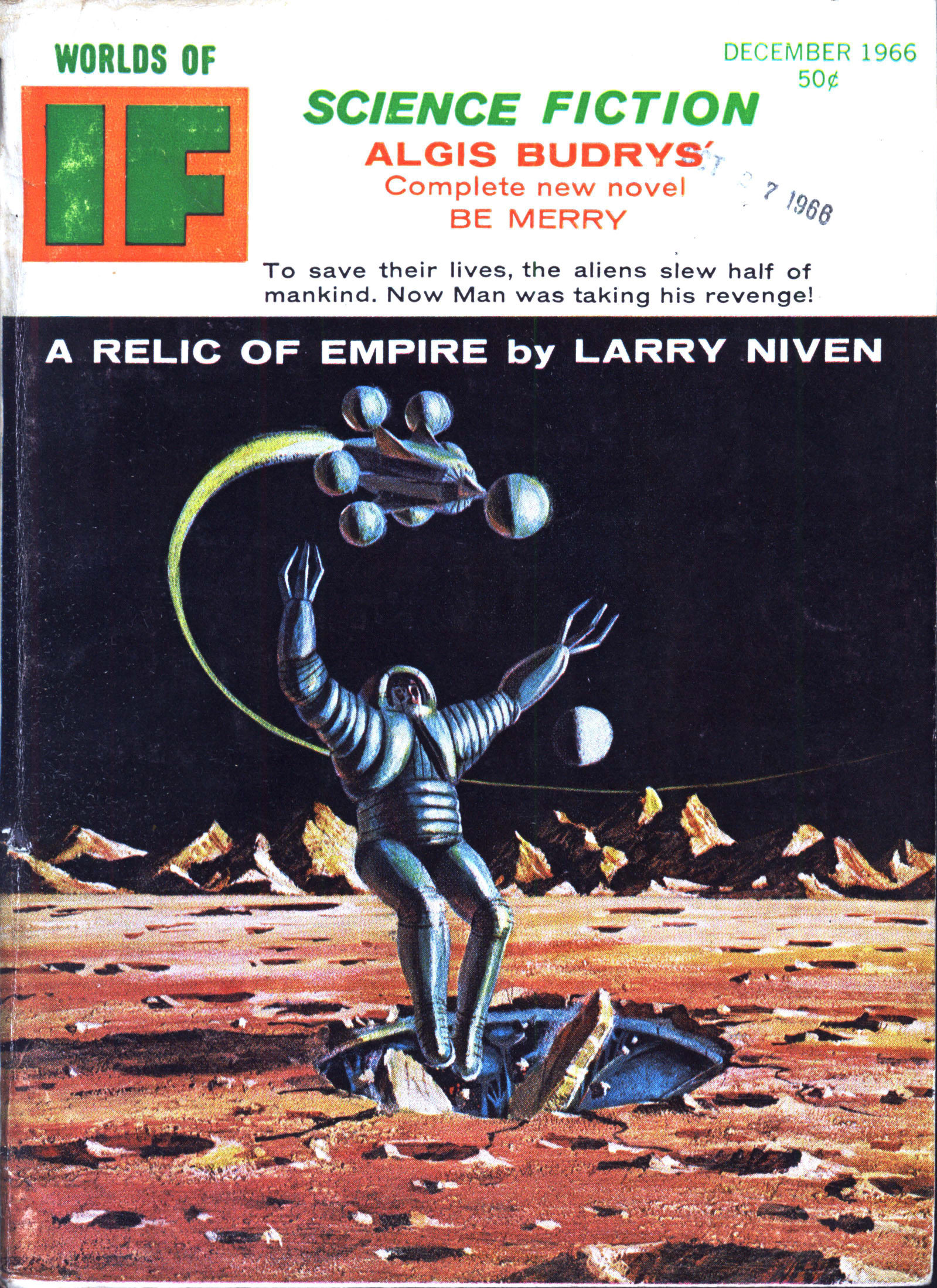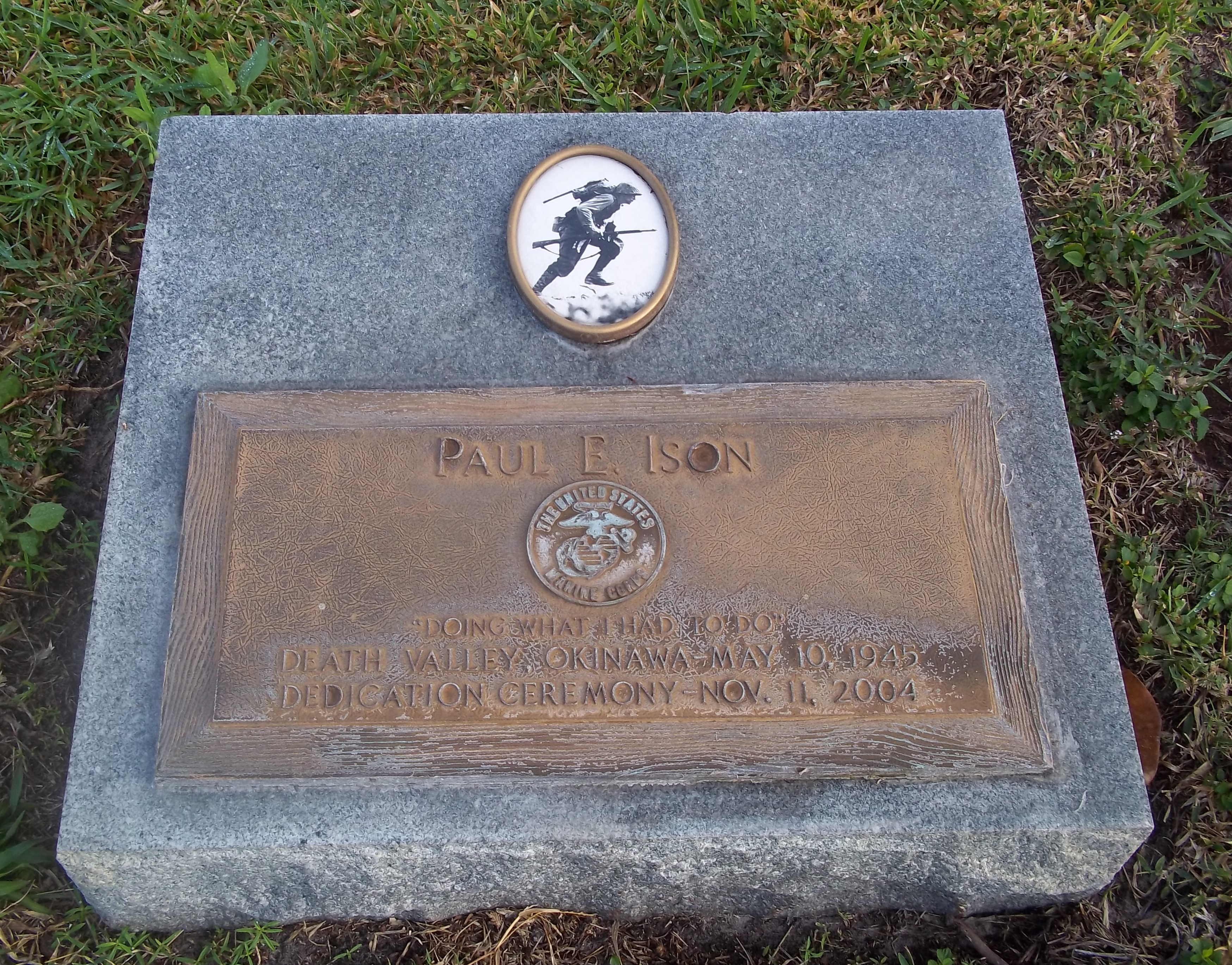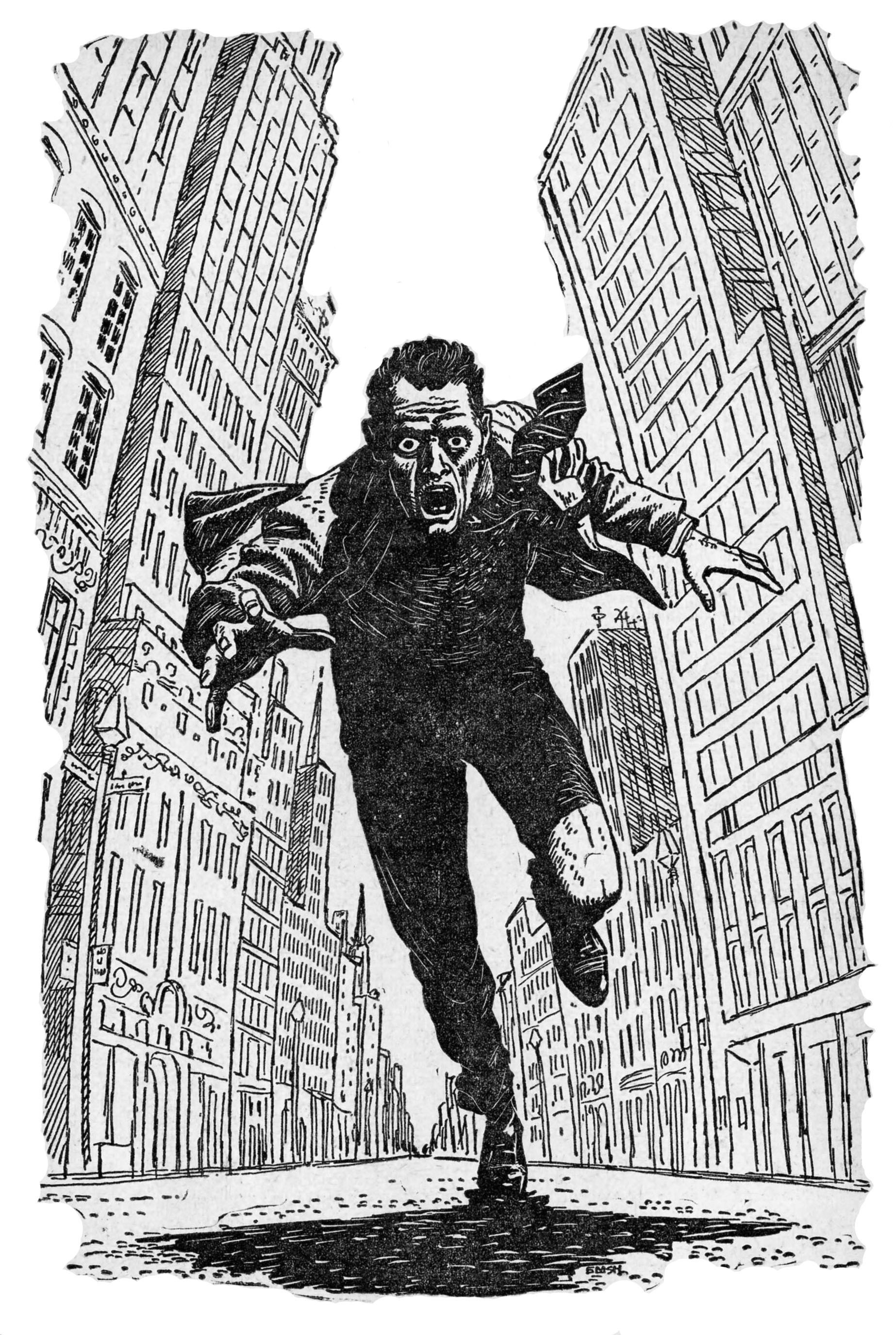Though – I assume – nowhere near as well known as his contemporaries, artist Kenneth S. Fagg created wonderful cover art for twelve issues of if – Worlds of Science Fiction from July of 1953 through May of 1955. Many of these illustrations are representations of the theme of “space” involving rockets, astronauts, and human exploration of other worlds. Though such images have of course long been de rigueer for the genre, Fagg’s paintings are strongly characterized by a sense of realism – at least, in terms of future technology as imagined in the 1950s – and, rich boldness of color, while lacking the aura of “myth” implied by the works of other artists. This is reflected in Fagg’s work for the United States Air Force. Although I’ve only been able to identify four paintings he completed for that branch of the service (three here and one here), whether depicting fact or fiction, his work had the same stylistic consistency.
That being said, three particular of his covers for if are really striking (did I say “really?!”): July, 1953, depicting a volcanic eruption on Saturn’s moon Titan; September, 1953, illustrating James Blish’s novelette A “Case of Conscience” – this one’s wonderful! (Frank Freas-“like”, but even better than Freas’); March, 1954, showing exoarcheologists on the surface of a newly discovered world.
Here’s one I find particularly appealing, especially given what’s happening in the world of 2024: For the July, 1954 issue of if, it’s simply a thematic illustration unrelated to any story within the issue. So, I humbly contradict what I said above: – While absent of space aliens, spandex-clad damsels, heroic explorers, this is nonetheless a very mythic cover!
While the sun of 2024 seems to be setting, I’ll continue to hope that the sun is really rising.
Here it is:
Here is what it says:
Adventure
Bravery
Civilization
Country
Courage
Discovery
Exploration
Family
Heritage
History
Honor
Inspiration
Loyalty
Memory
Respect
Steadfastness
Tenacity
Valor (it really says that!)
Wonder

This painting is so deeply evocative that, like William Timmins’ cover for the January, 1946 issue of Astounding, and Richard Powers’ cover for Dell’s 1959 imprint of The Sirens of Titan, I thought it worthy of “reimagining” to create an approximate representation of the image – sans title and text – before it actually became the magazine’s cover.
Here’s the result.
So, you ask, what’s inside the magazine?
“The Thing in the Attic”, by James Blish
“Beauty and the Beast”, by Robert F. Young
“Worth Citing”, uncredited essay
“The Small World of M-75”, by Ed M. Clinton, Jr.
“A Monster Named Smith”, by James E. Gunn (as James Gunn)
“Breaking the Time Barrier”, essay by Alson J. Smith
“Lonesome Hearts”, by R.R. Winterbotham (as Russ Winterbotham)
“Fair and Warmer”, by E.G. Von Wald
“Has Anybody Here Seen Kelly?”, by Bryce Walton (as Kenneth O’Hara)
“The Big Stink”, by Theodore R. Cogswell
And what else?
if – Worlds of Science Fiction, July, 1954, at…
… Internet Speculative Fiction Database
if (full run) at…
Illustrator Kenneth S. Fagg, at…















